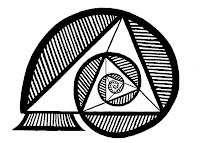Death comes, alas,
On raven wings,
And even kings
Like shadows pass
From mortal things.
But some of his most delightful writing comes in the autobiographical prose pieces collected in Orkney Shore (1973), mainly about his development as a naturalist, but with some nice poetical snippets, too, here musing on the vernacular names of the sea-shells that were his life's work, in particular the 'shell names from farm animals [which] have a northern provenance':
The common mussel with its outline of folded wings and up-turned neb was soon transformed into a 'kraa' with blue-black plumage. The finely corrugated ribs of a cockle, which in Norway became a sheep's fleece, was with us replaced by similar ribs on a scallop shell, and so recognized as the mark of a gimmer-shell. A cat's face could be seen in the obtuse 'cattibuckie' and that of a dog in the neb of a spired winkle ...' (Orkney Shore, pp. 19-20).A 'gimmer' is a year-old ewe, according to the Dictionary of the Scots Language and comes from Old Norse, though the word is not just Orcadian but is quite widespread in both Scottish and northern English dialects. The picture shows some scallop shells I found on the beach between Grit Ness and the Sands of Evie last week.
As a conchologist, Rendall of course picked up (Orkney Shore, p. 18) on the fact that the three-year old Egill Skallagrímsson (in ch. 31 of his saga), refers to the 'three silent dogs of the surf swell' that the juvenile poet got from his grandfather as payment for his first poem. The saga prose interprets this kenning as referring to kúfungar, or sea-snails, a term used for a large and diverse group of animals - it's a pity the Orcadian poet-conchologist didn't speculate a little more on just what shells these were, though he was fascinated by spiral shells:
The mind rests on its sheer loveliness, content, it may be, with the harmony of aesthetic values; or if so disposed, wanders in the dangerous but delightful labyrinth of speculative thought. This wonderfully contrived object, so specialised as to differ from all others in its class, yet not excelling in any intricacy of design, each in its own way being unique, what is it? (Orkney Shore, p. 122).



Hello, I live on Fair Isle and have been following your informative blog for a while now. I know Fair Isle (Fridarey) Has a few mentions in the Orkneyinga Saga... Do you know if it is written about any place else in the Viking world or Sagas?
ReplyDeleteTommy Hyndman
email: tommyartgallery@yahoo.com
Hello tommyart, nice to 'meet' you, I enjoy your blog too. I'm not aware of any mentions of Fair Isle in any sagas or other Old Norse texts other than Orkneyinga saga, though I might have missed something. If I come across anything, I'll let you know!
ReplyDelete